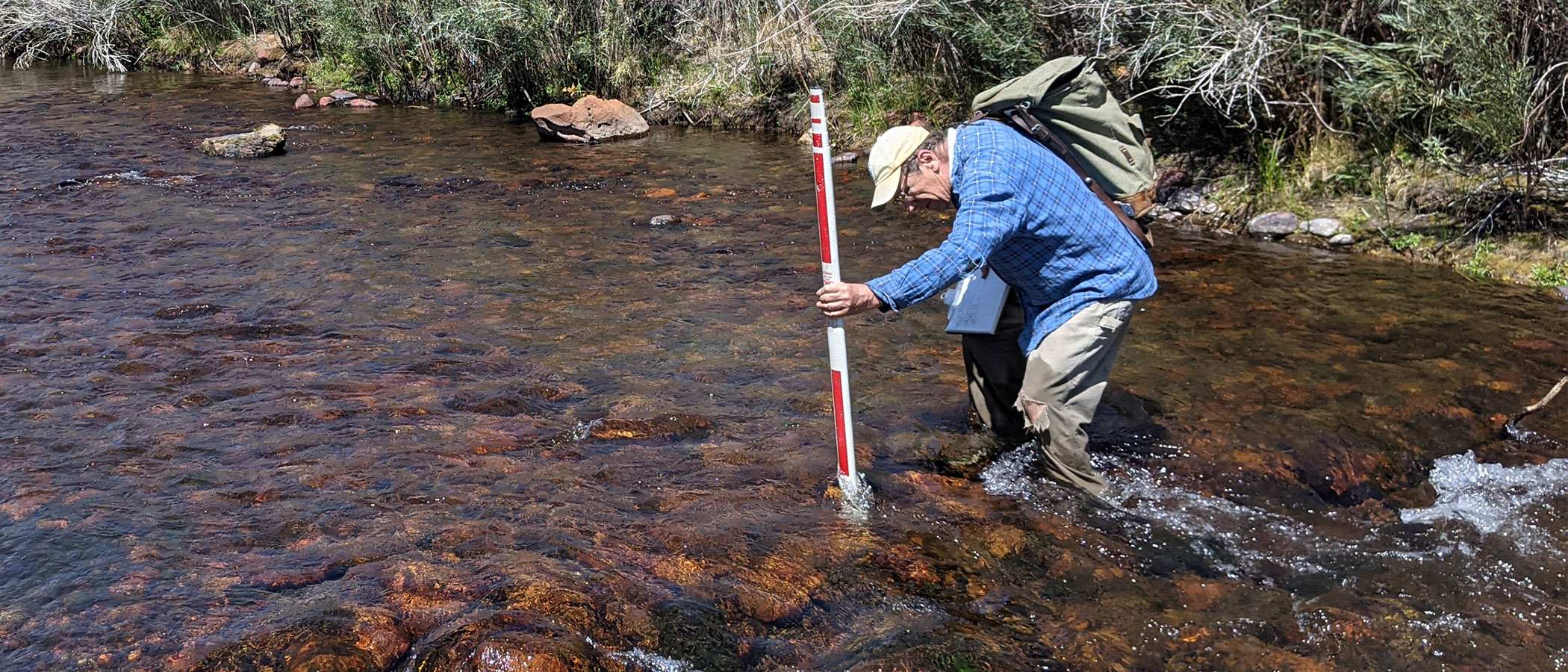
Last fall the California State Water Resources Control Board ordered new requirements to further the restoration of 20 miles of Mono Basin stream habitat on Lee Vining, Rush, Walker, and Parker creeks. Order 21-86 implements new Stream Ecosystem Flows (SEFs) and an ongoing process for management of annual flows, requires the construction of an outlet at the Grant Lake Reservoir Dam, and establishes a team approach to administer independent scientific monitoring on Mono Lake and its tributary streams. If stream restoration is a dance, then all the parties are learning and performing some new steps.
MAT moves
The State Water Board directed the Mono Basin Monitoring Administration Team (MAT) to collaboratively administer the Board’s scientific monitoring program. The Mono Lake Committee, California Trout, California Department of Fish & Wildlife, and the Los Angeles Department of Water & Power (DWP) are voting members and participants in the MAT. The MAT has chosen the National Fish & Wildlife Foundation (NFWF) to serve as the fiscal administrator of DWP funds that will be annually deposited for scientific monitoring. That monitoring includes continuing waterfowl and limnological monitoring, plus the work of the Stream Monitoring Directors. The Directors are also integrated into other elements of the order—like advising DWP on annual operations and adaptive management related to streamflows that are critical to the streams’ ecological health and self-sustaining trout populations.
The MAT has accomplished its first set of milestones required in Order 21-86. DWP deposited the required funding to NFWF with MAT approval that will finance independent scientific monitoring on Mono Lake and its tributary streams beginning this summer.
Latest outlet twist
As outlined in the order, to enable the prescribed SEFs in Rush Creek, DWP will construct an outlet at Grant Dam. The outlet design involves deepening and widening the existing overflow spillway and installing two 14-foot-tall Langemann gates, larger in scale but similar in design to the gate installed in the Lee Vining Creek diversion dam in 2005. DWP indicated this spring that permitting is underway but construction will likely not begin until 2023; DWP has until October 1, 2025 to complete the outlet and make it operational.
SEF synchronicity
A core component of Order 21-86 is delivering SEFs—allowing water to fl ow down the creeks to Mono Lake in the right amount and timing, mimicking the natural hydrograph to restore natural processes and protect trout. An Annual Operations Plan (AOP), developed collaboratively by DWP and the conservation parties, dictates how SEFs will actually be delivered. The Committee drew on deep familiarity with aqueduct operations to provide detailed comments on a range of AOP topics, including the AOP’s consistency with DWP’s amended licenses, Grant Lake Reservoir operations, and downstream flows into Rush Creek. The degree of AOP details is extensive, and it is an annual component of a broader plan called the Mono Basin Operations Plan, which DWP will develop with input from the Committee and conservation parties.
Notably, this is the first year that Parker and Walker creeks will run permanently free from diversions as mandated in the order—a remarkable and bright reversal of fortune in the water history of the Mono Basin and Eastern Sierra.
Mono tango
Managing and balancing streamflows, lake level, stream diversions, and Mono Basin operations is a complicated process, now guided by Order 21-86. The order provides an updated, well researched, and adaptive process for a new era of stream restoration, the implementation of a modernized dam outlet at Grant Lake Reservoir, and a collaborative dance score for guiding independent research and monitoring.
This post was also published as an article in the Summer 2022 Mono Lake Newsletter. Top photo by Robbie Di Paolo.
